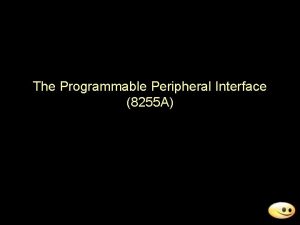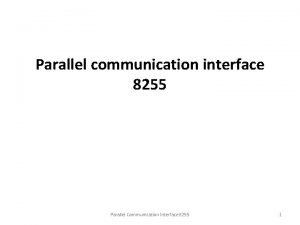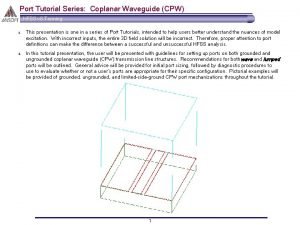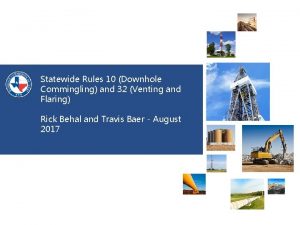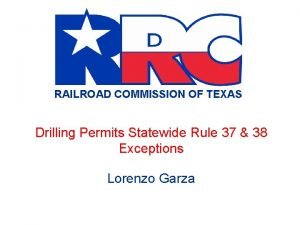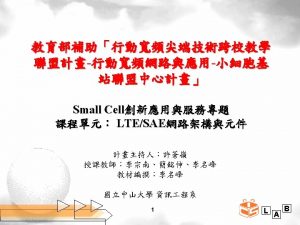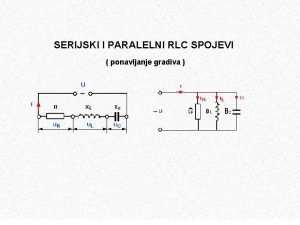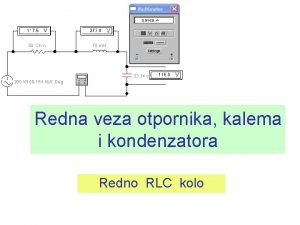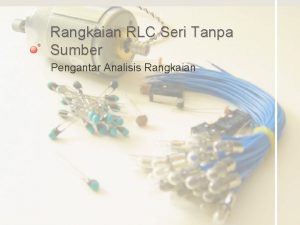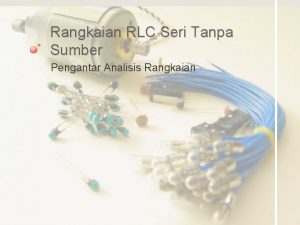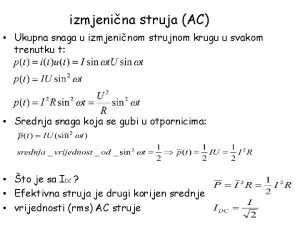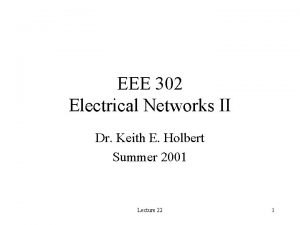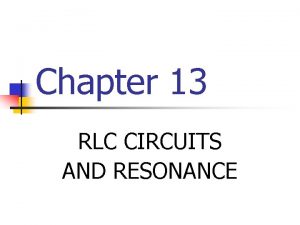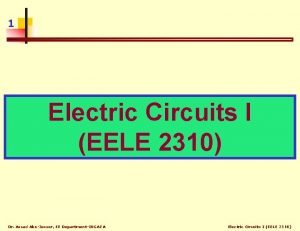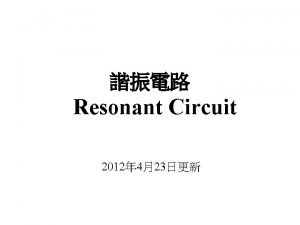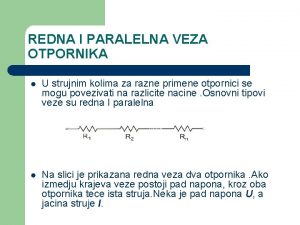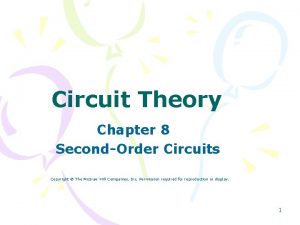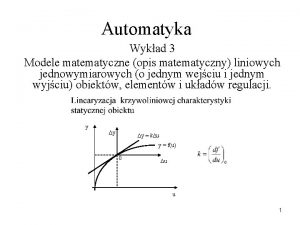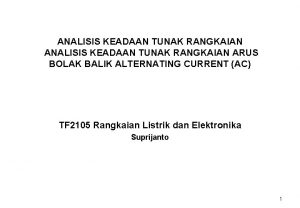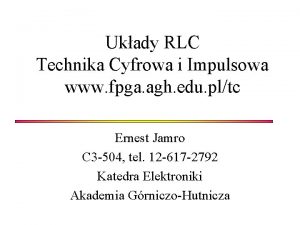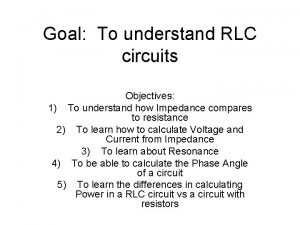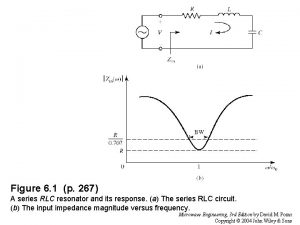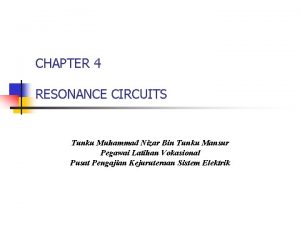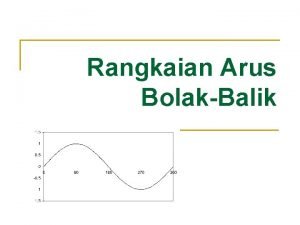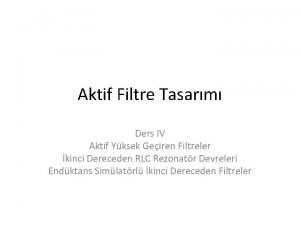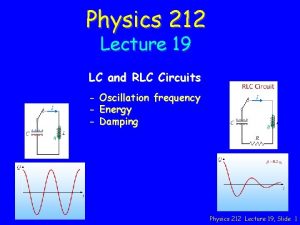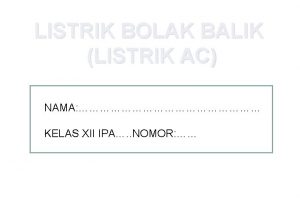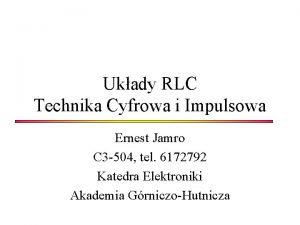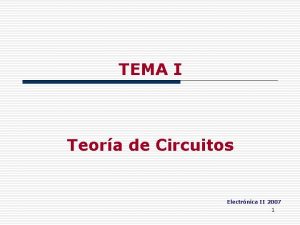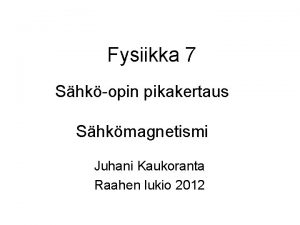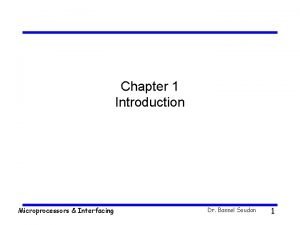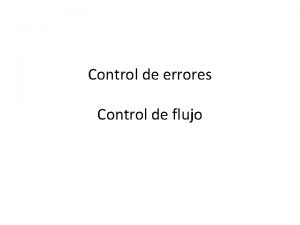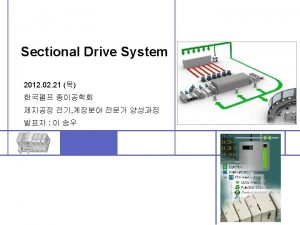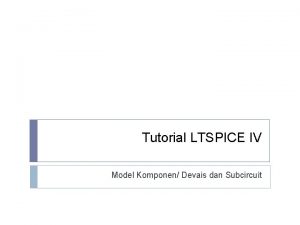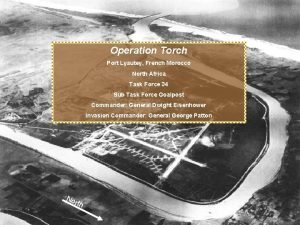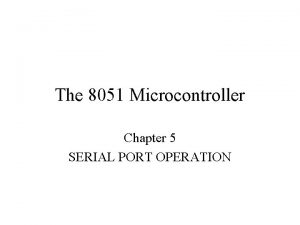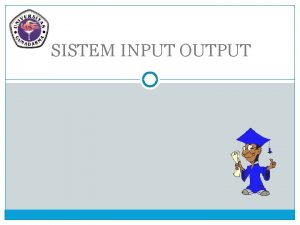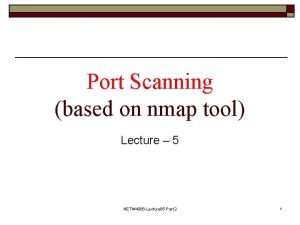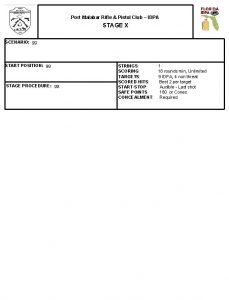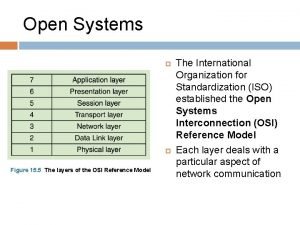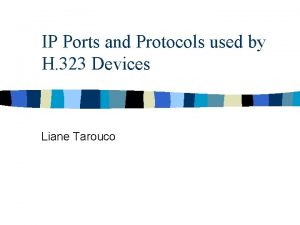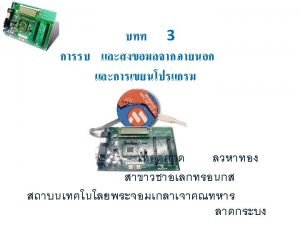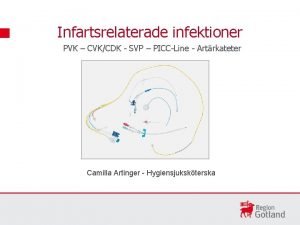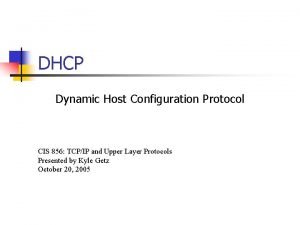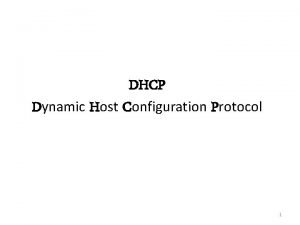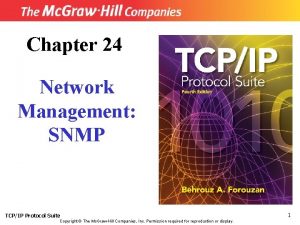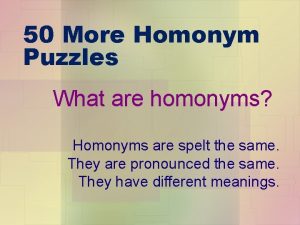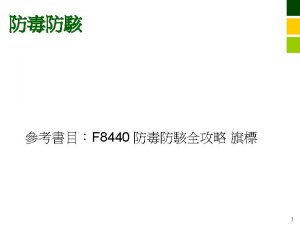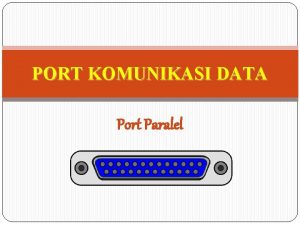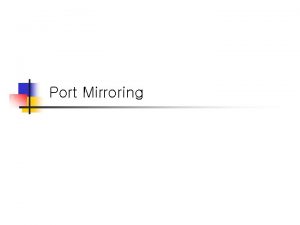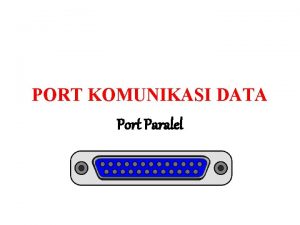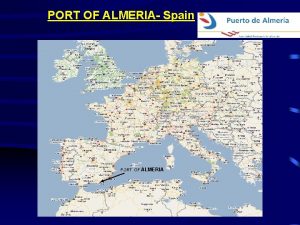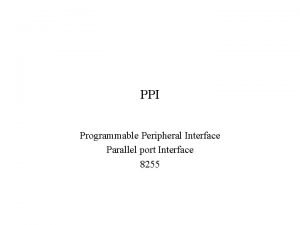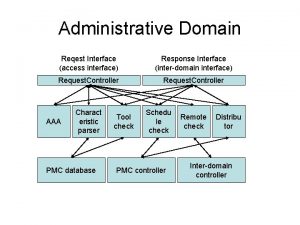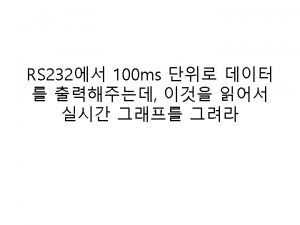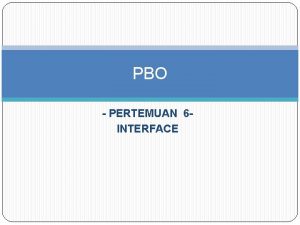Control PC Interface TE Port RRC PDCP RLC







































































































![plot(x, y); xlim([-8 8]); ylim([-1. 5]); plot(x, y); xlim([-8 8]); ylim([-1. 5]);](https://slidetodoc.com/presentation_image_h/8a5412ee965f79d25cdf46403e40d882/image-104.jpg)
![plot(x, y); axis([-8 8 -1. 5]); plot(x, y); axis([-8 8 -1. 5]);](https://slidetodoc.com/presentation_image_h/8a5412ee965f79d25cdf46403e40d882/image-105.jpg)
![plot(x, y); axis([-8 8 -1. 5]); title('y=sin(x)'); xlabel('x'); ylabel('sin(x)'); plot(x, y); axis([-8 8 -1. 5]); title('y=sin(x)'); xlabel('x'); ylabel('sin(x)');](https://slidetodoc.com/presentation_image_h/8a5412ee965f79d25cdf46403e40d882/image-106.jpg)
![color : ‘red’ format: ‘dashed line graph’ plot(x, y, ’r--’); axis([-8 8 -1. 5]); color : ‘red’ format: ‘dashed line graph’ plot(x, y, ’r--’); axis([-8 8 -1. 5]);](https://slidetodoc.com/presentation_image_h/8a5412ee965f79d25cdf46403e40d882/image-107.jpg)
![plot(x, y 1, 'r-', x, y 2, 'b-'); axis([-8 8 -1. 5]); plot(x, y 1, 'r-', x, y 2, 'b-'); axis([-8 8 -1. 5]);](https://slidetodoc.com/presentation_image_h/8a5412ee965f79d25cdf46403e40d882/image-108.jpg)

![subplot(2, 2, 1); plot(x, y 1, 'r-'); axis([-8 8 -1. 5]); subplot(2, 2, 2); subplot(2, 2, 1); plot(x, y 1, 'r-'); axis([-8 8 -1. 5]); subplot(2, 2, 2);](https://slidetodoc.com/presentation_image_h/8a5412ee965f79d25cdf46403e40d882/image-110.jpg)











- Slides: 121

Control PC Interface TE Port RRC PDCP RLC MAC PHY

Control PC Interface TE Port RRC 36. 331 PDCP 36. 323 Cpdcp. XXXXX() 36. 322 Crlc. XXXXX() RLC 36. 321 Cmac. XXXXX() MAC Cphy. XXXXX() 36. 104, 36. 211, 36. 212 36. 213, 36. 214, 36. 302 PHY Cte. XXXXX()

Protocol CT RF CT 36. 523 36. 521 -1, 36. 521 -3 23. 401, 24. 301, 29. 274, 32. 426, 33. 102, 33. 401, 33. 402 NAS 36. 331 RRC 36. 323 PDCP 36. 322 RLC 36. 321 MAC 36. 104, 36. 211, 36. 212 36. 213, 36. 214, 36. 302 PHY

SGSN PCRF HSS MME IP e. Node. B UE SGW (Serving Gateway) PGW (PDN Gateway)

MSC Voice Call Traffic Path Registration to CS Network Path BSC BTS (GSM) Paging Path SGSN SGs RNC UE Node. B (UMTS) MME IP e. Node. B (LTE) SGW (Serving Gateway) PGW (PDN Gateway)

SGSN PCRF HSS MME IP e. Node. B SGW (Serving Gateway) PGW (PDN Gateway) UE EPS Bearer External Bearer

UE Internet EPC E-UTRAN e. Node. B S-GW Peer Entity P-GW End-to-End Service EPS Bearer E-RAB External Bearer S 5/S 8 Bearer Radio Bearer S 1 Bearer Radio S 1 S 5/S 8 Gi

ON Duration DRX Cycle PDCCH Reception Here DRX Inactivity Time ON Duration DRX Cycle

PDCCH Reception Here DRX Inactivity Time ON Duration DRX Cycle DRX Command MAC CE Reception Here (Both DRX Inactivity timer and On. Duration Timer stops here) ON Duration Short DRX Cycle Timer Long DRX Cycle

http: //lteworld. org/blog/measurements-lte-e-utran High frequency Current Cell UE Center frequency Low frequency High frequency Center frequency Low frequency Target Cell

High frequency Current Cell UE Target Cell Center frequency Low frequency Target Cell High frequency Current Cell Center frequency Low frequency UE

High frequency Current Cell UE Target Cell Center frequency Low frequency High frequency Current Cell Center frequency Low frequency UE Target Cell

High frequency Current Cell UE Target Cell Center frequency Low frequency High frequency Current Cell UE Center frequency Target Cell Low frequency

IMS SIP H. 323 H. 263 RTP etc SMS Voice (Vo. IP) Video

SIP Application Servers SGSN IMS (CSCF) HSS PCRF MME e. Node. B UE Other IP Network SGW (Serving Gateway) PGW (PDN Gateway)

SIP Register Server Clients B A INVITE REGISTER (Contact Address) AUTHENTICATION REQUEST 100 Trying 180 Ringing 200 OK REGISTER (Credentials) Media Transfer OK BYE 200 OK

PC 1 – UE PC PC 2

Server PC Ethernet Cable TE Port RF Port LTE Network Simulator UE PC Wireshark

Dummy Hub IP Network Data Server Router TE Port RF Port LTE Network Simulator Wireshark IP Monitoring PC for troubleshot UE PC Wireshark

Bit Stream 36. 211 6. 3. 1 I/Q 36. 211 6. 3. 2 I/Q 36. 211 6. 3. 3 I/Q 36. 211 6. 3. 4 36. 211 6. 5

Cell Specific Reference Signal PDCCH PA PB PDSCH : in the same symbol as reference signal PDSCH : in the symbol with no reference signal

In some subframe, there can be no SRS depending on SRS Scheduling parameter settings 1 subframe

Attach Request EPS attach type value Old GUTI or IMSI PDN Connectivity Request PDN type Access point name UE network capability NAS : Security Mode Command Replayed UE security capabilities Attah Accept Activate Default EPS Bearer Setup Request GUTI PDN type EPS attach result value Access point name

SIB 1 TAC (Tracking Area Code) Tracking Area Update Request Old GUTI EPS Bearer Context Status Old Location Area Identification Tracking Area Update Accept GUTI TAI List EPS Bearer Context Status Location Area Identification

RRC Dedicated. Info. NAS Message(EMM) NAS(ESM) Message Type (8 bits) Protocol Discriminator + Message Authentication Code + Sequence Number (44 bits) Security Header Type (4 bits) Length of Dedicated. Info. NAS C 1 (RRC Message Type Identifier : 4 bits)

1 frame 1 subframe 1 slot PUCCH Region Subband 3 Subband 2 Subband 1 Subband 0 PUCCH Region

PUCCH Region Subband 3 Subband 2 Subband 1 Subband 0 PUCCH Region

PUCCH Region Subband 3 Subband 2 Subband 1 Subband 0 PUCCH Region

PUCCH Region Subband 3 Subband 2 Subband 1 Subband 0 PUCCH Region

PUCCH Region Subband 3 Subband 2 Subband 1 Subband 0 PUCCH Region

PUCCH Region Subband 3 Subband 2 Subband 1 Subband 0 PUCCH Region


(a) (b) (c) (d) (e) 1 subframe



LTE CDMA WCDMA Voice Comm CSFB Packet Comm CSFB HO Packet Comm RD RD Idle HO CR CS RD CS Packet Comm RD CR Idle HO Packet Comm CR Idle CS CS Power On CS : Cell Selection CR : Cell Reselection RD : Cell Redirection HO : Handover CSFB : CS Fallback Idle

NW UE RRC Connection Request T 300 RRC Connection Setup NW UE RRC Connection Request T 300 RRC Connection Reject

UE Higher Layer UE Lower Layer Out of Sync Indication N 310 Times Out of Sync Indication In Sync Indication T 310 In Sync Indication N 311 Times In Sync Indication

UE Higher Layer UE Lower Layer Out of Sync Indication N 310 Times Out of Sync Indication T 310 Triggering Handover Procedure UE Higher Layer UE Lower Layer Out of Sync Indication N 310 Times Out of Sync Indication T 310 Initiating Connection Reestablishment

op 0 + 0 op + 0 0 ip 0 -1 Z 0 0 0 Z 0 -1 ip 0 + -1 Z 0 -1 + 0 1 + op op 1 + 0 0 ip 1 -1 Z 0 1 1 + Z 0 -1 ip 0 -1 Z 0 -1 + 1 op op

op 1 + 0 op + 1 0 ip 0 -1 Z 0 0 0 Z 1 -1 ip 1 + -1 Z 0 -1 + 1 op op op 1 + op 0 + 1 0 ip 1 -1 Z 0 1 1 + Z 1 -1 ip 1 -1 Z 0 -1 + 0 op op

op 0 + op 1 + 0 1 ip 0 -1 Z 1 0 0 + Z 0 -1 ip 0 -1 Z 0 Z 1 -1 + 0 1 + op op 0 + 0 1 ip 1 -1 Z 1 1 1 + Z 0 -1 ip 0 -1 Z 1 -1 + 1 op op

op 0 + 1 1 ip 0 -1 Z 1 0 0 + Z 1 -1 ip 1 -1 Z 0 Z 1 -1 + 1 1 + op op 1 + 1 1 ip 1 -1 Z 1 1 1 + Z 1 -1 ip 1 -1 Z 1 -1 + 0 op op


GPS Signal Frame Structure Telemetry and handover words (TLM and HOW) Satellite clock, GPS time relationship Telemetry and handover words (TLM and HOW) Ephemeris (precise satellite orbit) Telemetry and handover words (TLM and HOW) Almanac component (satellite network synopsys, error correction) Word Subframe 1 -2 3 -10 1 1 -2 3 -10 2 1 -2 3 Frame 300 bits 1500 bits 3 -10 4 5

x(n) y(n) x(n)y(n)

Sum of Times (Sum of Multiplication) Correlation Inner Product Discrete Fourier Transform Convolution

Sum of Times (Sum of Multiplication)

FIR IIR

This means the result of convolution is an array (vector) with the size = n This means that each element (each value) of the convolution comes from “Sum of Multiplication” 1. 2. 3. 4. g[-m] This is same as g[-m + n] is same as g[-(m-n)] is same as g[-m] shifted by n g[-m] is the reflection of g[m] around y axis g[-(m-n)] =g[n-m] n g[m]



Control System Model Simultaneous Equations Matrix Statistics Operation / Manipulation Result Of Operation Graph Theory Statistics Graph Theory Computer Graphics Presentation Computer Graphics Linear Algegra Interpretation


(x 2, y 2) (x 1, y 1) 1. 0 0. 0 x 1 x 2 0. 0 1. 0 y 1 y 2

(x 2, y 2) (x 1, y 1) -1. 0 0. 0 x 1 x 2 0. 0 1. 0 y 1 y 2 1. 0 0. 0 x 1 x 2 0. 0 -1. 0 y 1 y 2 (x 1, y 1) (x 2, y 2)

(x 1, y 1) -1. 0 0. 0 x 1 x 2 0. 0 -1. 0 y 1 y 2 (x 2, y 2) (x 1, y 1) 1. 0 0. 3 x 1 x 2 0. 0 1. 0 y 1 y 2

(x 1, y 1) (x 2, y 2) cos(pi/4) -sin(pi/4) x 1 x 2 sin(pi/4) y 1 y 2 cos(pi/4) pi/4



0. 2 1 0. 8 0. 0 0. 4 0. 35 2 0. 15 0. 5 3 0. 6 To From 1 2 3 1 0. 2 0. 8 0. 0 2 0. 4 0. 15 0. 6 3 0. 5 0. 35 0. 0



(a) (a_f) (b_f) (c) Location, Size of the peak does not change, but graph gets smoother (c_f) (d_f) Length of signal is same but lengh of Zero Pad gets longer Signal Zero Pad

Total number of data points is same but number of periods gets larger (a) (a_f) (b) (c) (b_f) Location of the peak does not change, but height of the peak gets higher and width of the peak (c_f) gets narrower (d) (d_f)


A B C s(t) Abs(fft(s(t)) Arg(fft(s(t)) Abs(fft(s(t)) : Expanded Arg(fft(s(t)) : Expanded a b c d e f g h i

a = 1. 0; b = 1. 0; p 1 = 0. 0; p 2 = 0. 0; A B C (a) (b) p (i) (iii) (c) (v) (d) (iv) Figure 1

a = 1. 0; b = 1. 0; p 1 = 0. 0; p 2 = 0. 2*pi; A B C (a) (b) p (i) (iii) (c) (v) (d) (iv) Figure 2

a = 1. 0; b = 0. 8; p 1 = 0. 0; p 2 = 0. 0; A B C (a) (b) p (i) (iii) (c) (v) (d) (iv) Figure 3 m 1 m 2

a = 1. 0; b = 0. 8; p 1 = 0. 0; p 2 = 0. 2*pi; A B C (a) (b) p (i) (iii) (c) (v) (d) (iv) Figure 4 m 1 m 2

(a) (b) (c) Discontinuity of Phase Due to phase calculation software algorithm (d)

A a = 1. 0; b = 1. 0; p 1 = 0. 0; p 2 = 0. 0; (a) (b) (c) (d) B a = 1. 0; b = 1. 0; p 1 = 0. 0; p 2 = 0. 2*pi; C a = 1. 0; b = 0. 7; p 1 = 0. 0; p 2 = 0. 0; D a = 1. 0; b = 0. 7; p 1 = 0. 0; p 2 = 0. 2*pi;

Time Domain Fourier Series Expansion A combination of infinite number (sin() + cos()) Time Domain Time domain Data Sequence Freq Domain Fourier Transform Frequency Domain Data

This is a differential equation because it has ‘derivative’ components in it derivative form differential form This is a differential equation because it has ‘differential’ components in it This is NOT a differential equation because it does not have ‘differential’ nor ‘derivative’ components in it This is NOT a differential equation because it is not a form of equation (no ‘equal’ sign) even though it has ‘derivative’ component in it

Algebraic Equation Solution Algebraic Equation Solver In this case, Variable y is a number In this case, Solution y is a value Differential Equation Solution Differential Equation Solver In this case, variable y is a function (e. g, y(x), y(t) etc)) In this case, Solution y is a function (e. g, y(x), y(t) etc))

As you see here, the dependent variable in differential equation is a ‘Function’, not a value. This is a key characteristics that defines ‘Differential Equation’ The highest order among all terms becomes the order of the differential equation. In this case, the highest Order is 3. So we call this equation as a ‘ 3 rd order differential equation’ Dependent Variable Independent Variable Order (=3) Order (=2) implies Independent Variable

Dependent Variable Independent Variable implies There are only one type of independent variable. This kind of differential equation is called Ordinary Differential Equation (ODE) Independent Variable Dependent Variable Independent Variable implies There are more than one types of independent variables. (In this example, we have two different type of independent variable). This kind of differential equation is called Partial Differential Equation (PDE) Independent Variable

Calculus Differential Equation (Continous) Modeling Algebra Laplace Transform F(s) (Laplace Form) Solving Solution Real World Problem Inverse Transform Solution Modeling Solving Difference Equation (Discrete) Solution F(z) (z Form) z Transform

Laplace Transform Symbols for original function Symbols for Laplace Transformed Function Definition of Laplace Transformed Function

: Unit Step 1

Differential Equation e. g, f(y’’, y’, t) Any Solution Process Differential Equation e. g, f(y’’, y’, t) Laplace Transform y(t) = ? ? ? Y(s) = ? ? ? Inverse Laplace Transform y(t) = ? ? ?

Derive a differential equation that tells you the velocity of a falling body at any given time. (Assume the condition where you should not ignore the air resistance) Governing Law : Total Force applied to a body = Motion of the body Q. Can I convert this into a term related to velocity ? Q. What kind of Force is there ? i) A. Yes. Acceleration (a) is the derivative of velocity (v) Force to helps movement = Pulling force by gravity = ii) Force to hinder movement = air resistance = Why negative sign here ? : It is because this fource act in opposite direction to the other Force (Gravity). : We assumed that Pulling Force by Gravity is ‘Positive Force’

A B C Force trying to get to the spring’s resting position = -k s p 4 p 1 s -x x=0 p 2 +x p 3 Force being pulled down by gravity =mg If you hand a mass to the spring, it would try to fall down and length of the spring would increase, but soon the mass would not fall down anymore because of the restoration force of the spring. This is the point where the springs restoration force and pulling force by gravity become same. We call this point as “Equilibrium Point”. At this point, the mass does not move in any direction. So it is the same situation where there is no force being applied to the body (in reality, the two force with the same amount is continuously being applied in opposite direction) It is very important to know where is the reference point, the point where we define x = 0. It is totally up to you how to define the reference point. You can set any point as a reference point but the final mathematical equation may differ depending on where you take as a reference point. So usually, we set the point where we can get a simplest mathematical model. In vertical spring model, we set the Equilibrium Point as the reference point because we can remove the term –k s and mg since they cancel each other at this point

C Governing Law : Total Force applied to a body = Motion of the body Q. What kind of Force is there ? i) -x A. x=0 +x Force to makes movement = Restoration force of the spring trying to get back to the equilibrium position = ii) Force created by Gravity = Force pulling the object down to the ground = iii) We can set this part to be ‘ 0’ by setting ‘the equilibrium point’ as the reference point of the model. (Refer to previous figure and comments on it) Q. Can I convert this into a term related to position of the mass (x = distance from the reference point) ? Force to oppose the pulling force by gravity = Restoration force of the spring just to oppose the pulling force by gravity = iv) Force to prevent movement = damping force = Yes. Acceleration (a) is the 2 nd derivative of distance (x)


Governing Law : Population Growth Rate per Individual = Rate of Factors increasing the Population – Rate of Factoring decreasing the Population Q. What kind of Factors are there ? i) Increasing Factors a) Birth Rate ? = b) Rate of immigration = ii) Decreasing Factors a) Death Rate = b) Rate of emigration =

Governing Law : Kirchhoff's voltage law The directed sum of the electrical potential differences (voltage) around any closed circuit is zero The sum of the emfs in any closed loop is equivalent to the sum of the potential drops in that loop Voltage Drop EMFS : Voltage Generator Voltage Drop

Voltage Generator(positive sign) Voltage Drop (negative sign) Differentiate both sides Simplify the equation


Mathematical Operation Modeling Interpretation Other Models Differential Equation Real World Problem Matrix Statistics Probability (Stocastics) Other Models Mathematical Solution Real World Solution

amp 1 CH 1 x I amp 2 CH 2 x + amp 1 CH 3 x Q CH 4 amp 2 x x j I+j. Q


x 1 amplitude = 1 x 2 amplitued = 0. 5 x 1 amplitude = 1 x 2 amplitued = 0. 25 How do we get this kind of constellation ?



e 2 e 1 x 1 e 3 e 4 EVM_x 1 = min{e 1, e 2, e 3, e 4};

assuming Is this constellation correct ?

Chip Rate Signal

Real part Imaginary axis =abs(a+b i) =arg(a+b i) =angle of (a+b i) Real axis

c 3 = c 1 + c 2 c 1 c 3 c 1

plot(y) Horizontal axis is automatically set, because it is not specified in plot() function

plot(x, y) Total horizontal range is automatically set, because it is not specified in plot() function
![plotx y xlim8 8 ylim1 5 plot(x, y); xlim([-8 8]); ylim([-1. 5]);](https://slidetodoc.com/presentation_image_h/8a5412ee965f79d25cdf46403e40d882/image-104.jpg)
plot(x, y); xlim([-8 8]); ylim([-1. 5]);
![plotx y axis8 8 1 5 plot(x, y); axis([-8 8 -1. 5]);](https://slidetodoc.com/presentation_image_h/8a5412ee965f79d25cdf46403e40d882/image-105.jpg)
plot(x, y); axis([-8 8 -1. 5]);
![plotx y axis8 8 1 5 titleysinx xlabelx ylabelsinx plot(x, y); axis([-8 8 -1. 5]); title('y=sin(x)'); xlabel('x'); ylabel('sin(x)');](https://slidetodoc.com/presentation_image_h/8a5412ee965f79d25cdf46403e40d882/image-106.jpg)
plot(x, y); axis([-8 8 -1. 5]); title('y=sin(x)'); xlabel('x'); ylabel('sin(x)');
![color red format dashed line graph plotx y r axis8 8 1 5 color : ‘red’ format: ‘dashed line graph’ plot(x, y, ’r--’); axis([-8 8 -1. 5]);](https://slidetodoc.com/presentation_image_h/8a5412ee965f79d25cdf46403e40d882/image-107.jpg)
color : ‘red’ format: ‘dashed line graph’ plot(x, y, ’r--’); axis([-8 8 -1. 5]); title('y=sin(x)'); xlabel('x'); ylabel('sin(x)');
![plotx y 1 r x y 2 b axis8 8 1 5 plot(x, y 1, 'r-', x, y 2, 'b-'); axis([-8 8 -1. 5]);](https://slidetodoc.com/presentation_image_h/8a5412ee965f79d25cdf46403e40d882/image-108.jpg)
plot(x, y 1, 'r-', x, y 2, 'b-'); axis([-8 8 -1. 5]);

col 1 row 2 1 N+1 row M Subplot(M, N, 1); plot() Subplot(M, N, 2); plot() Subplot(M, N, 3); plot() Subplot(M, N, M x N); plot() col 2 col 3 col N 2 3 N N+2 N+3 N+N Nx. N
![subplot2 2 1 plotx y 1 r axis8 8 1 5 subplot2 2 2 subplot(2, 2, 1); plot(x, y 1, 'r-'); axis([-8 8 -1. 5]); subplot(2, 2, 2);](https://slidetodoc.com/presentation_image_h/8a5412ee965f79d25cdf46403e40d882/image-110.jpg)
subplot(2, 2, 1); plot(x, y 1, 'r-'); axis([-8 8 -1. 5]); subplot(2, 2, 2); plot(x, y 2, 'g-'); axis([-8 8 -1. 5]); subplot(2, 2, 3); plot(x, y 3, 'b-'); axis([-8 8 -1. 5]); subplot(2, 2, 4); plot(x, y 4, 'm-'); axis([-8 8 -1. 5]);

re al Plot curve along imaginary axis (absolute value of the expression) (the line where real value = 0) = This represents ‘Frequency Response’ imaginary pole Plot curve along imaginary axis (arg of the expression) (the line where real value = 0)










 Read and write signal in 8255
Read and write signal in 8255 8255 block diagram
8255 block diagram Hfss coplanar waveguide
Hfss coplanar waveguide Expansion bus interface
Expansion bus interface Interface in interface java
Interface in interface java User led through interaction via series of questions
User led through interaction via series of questions Office interface vs industrial interface
Office interface vs industrial interface An interface
An interface Rrc wellbore query
Rrc wellbore query Rrc online query
Rrc online query Rrc wellbore query
Rrc wellbore query Texas rrc w1 search
Texas rrc w1 search Rrc texas online
Rrc texas online Texas state plane zones
Texas state plane zones Rrc connection reconfiguration
Rrc connection reconfiguration Rrc connection reconfiguration
Rrc connection reconfiguration Pi rrc
Pi rrc Texas rrc online query
Texas rrc online query Rrc proration schedule
Rrc proration schedule Uic rrc
Uic rrc Rrc field rules query
Rrc field rules query Port based network access control
Port based network access control Paralelna rezonancija
Paralelna rezonancija Rlc strujni krug
Rlc strujni krug Ciri-ciri litar selari
Ciri-ciri litar selari Redno rlc kolo
Redno rlc kolo Rlc paralel
Rlc paralel Persamaan diferensial rangkaian rlc
Persamaan diferensial rangkaian rlc Fázový diagram rlc obvodu
Fázový diagram rlc obvodu Rlc strujni krug
Rlc strujni krug Quality factor of rlc circuit
Quality factor of rlc circuit Q factor of lcr circuit formula
Q factor of lcr circuit formula Lesson 8 comparing series and parallel rlc circuits
Lesson 8 comparing series and parallel rlc circuits Rlc
Rlc Paralelna veza
Paralelna veza V r and i in parallel circuits ch.8:1 answer key
V r and i in parallel circuits ch.8:1 answer key Transmitancja widmowa
Transmitancja widmowa Hukum kirchoff
Hukum kirchoff Układ rlc równoległy
Układ rlc równoległy Persamaan diferensial orde 2 rangkaian rlc
Persamaan diferensial orde 2 rangkaian rlc Rlc circuit conclusion
Rlc circuit conclusion Parallel rlc
Parallel rlc Parallel rlc
Parallel rlc Jnc 8051
Jnc 8051 N= sin i/sin r
N= sin i/sin r çentik filtre
çentik filtre Rlc filtre
Rlc filtre Rc rl lc rlc circuits
Rc rl lc rlc circuits Rlc oscillation
Rlc oscillation Listrik ac kelas 12
Listrik ac kelas 12 Rlc laplace
Rlc laplace Circuito rlc amortiguado
Circuito rlc amortiguado Fao rlc
Fao rlc Käämin resistanssin laskeminen
Käämin resistanssin laskeminen Rlc microprocessor
Rlc microprocessor Translational research institute on pain in later life
Translational research institute on pain in later life Product vs process
Product vs process Fluids mechanics
Fluids mechanics Stock control e flow control
Stock control e flow control Control volume vs control surface
Control volume vs control surface Negative vs positive control operon
Negative vs positive control operon Negative control definition
Negative control definition Data link control
Data link control Control de flujo y control de errores
Control de flujo y control de errores Negative control vs positive control examples
Negative control vs positive control examples Flow control and error control
Flow control and error control Scalar control vs vector control
Scalar control vs vector control Control c control v
Control c control v Lpc debug port
Lpc debug port Port said unlocode
Port said unlocode Port of bar
Port of bar Battle of port lyautey
Battle of port lyautey Agp versions
Agp versions Number of modes of operation of serial port are
Number of modes of operation of serial port are Port 161 snmp
Port 161 snmp Pertukaran data antara cpu dan modul i/o melalui...
Pertukaran data antara cpu dan modul i/o melalui... Adani mundra port visit permission
Adani mundra port visit permission 8051 serial port programming
8051 serial port programming Seri port nedir
Seri port nedir What is ex link port on samsung tv
What is ex link port on samsung tv Cfs.saigonnewport
Cfs.saigonnewport Port of hamburg marketing
Port of hamburg marketing Virtual port-channel
Virtual port-channel Pracovn�� port��l
Pracovn�� port��l Costum popular osenesc
Costum popular osenesc O que é port in portabilidade
O que é port in portabilidade Stealth scanning technique
Stealth scanning technique Port malabar rifle & pistol club
Port malabar rifle & pistol club Port forwarding vmware fusion
Port forwarding vmware fusion Port bulgaria
Port bulgaria Brittany place apartments port arthur tx
Brittany place apartments port arthur tx Port community system
Port community system Mime port number
Mime port number Cvfwd.exe
Cvfwd.exe Gambar di atas adalah nat jenis port resticted cone
Gambar di atas adalah nat jenis port resticted cone D mpfi system uses
D mpfi system uses Bow stern port starboard
Bow stern port starboard Adaudit plus default port
Adaudit plus default port Jps negeri sembilan
Jps negeri sembilan H 323 port
H 323 port Digital i/o port
Digital i/o port Port alu
Port alu Port a cath
Port a cath Vena subclavia
Vena subclavia Imo port facility numbers
Imo port facility numbers How raffles set up a trading settlement in singapore
How raffles set up a trading settlement in singapore Galataport location
Galataport location Un croquis
Un croquis Accelerator coherency port
Accelerator coherency port Ess.salalah port employee self.com
Ess.salalah port employee self.com Mime port number
Mime port number Verilog hdl
Verilog hdl Dhcp message flow
Dhcp message flow Dhcp format
Dhcp format Http://www.singlewindow.cn
Http://www.singlewindow.cn Port number groups
Port number groups Snmp uses two other protocols and
Snmp uses two other protocols and Mime port number
Mime port number Usb port analyzer
Usb port analyzer Heparinisering
Heparinisering Port agp
Port agp Bread homonym
Bread homonym
